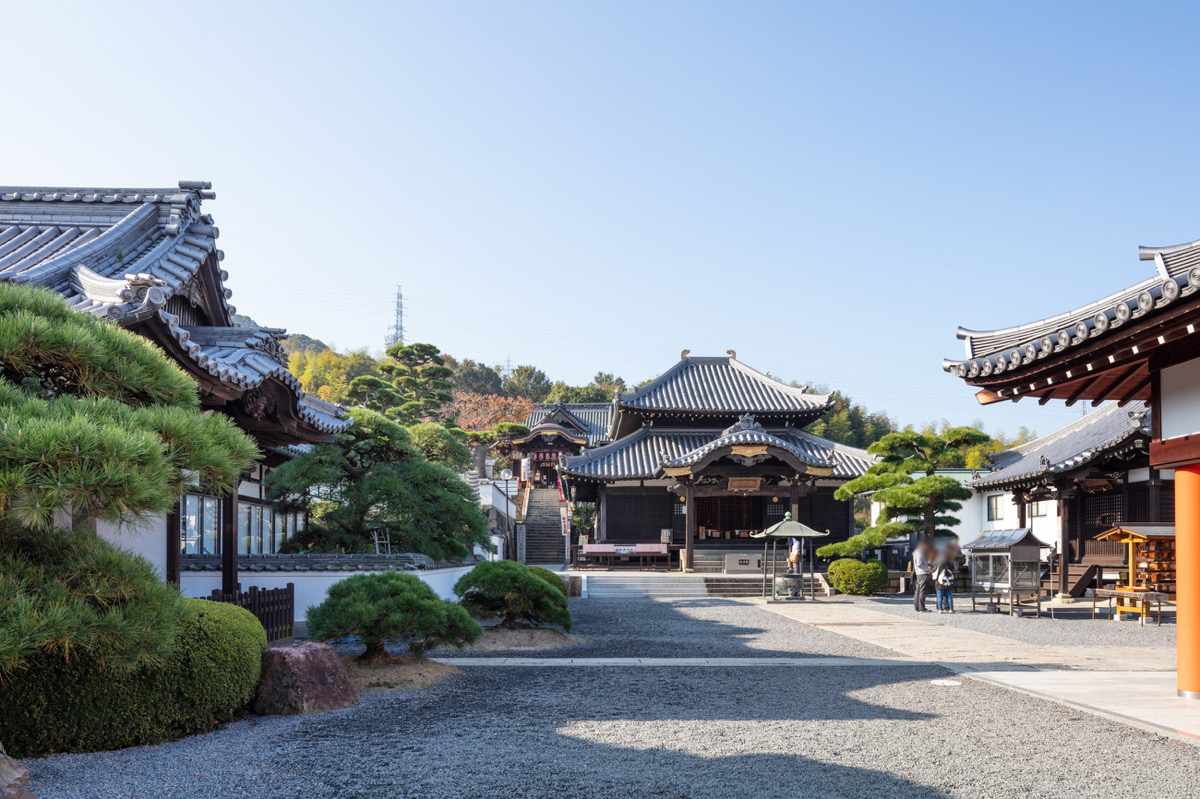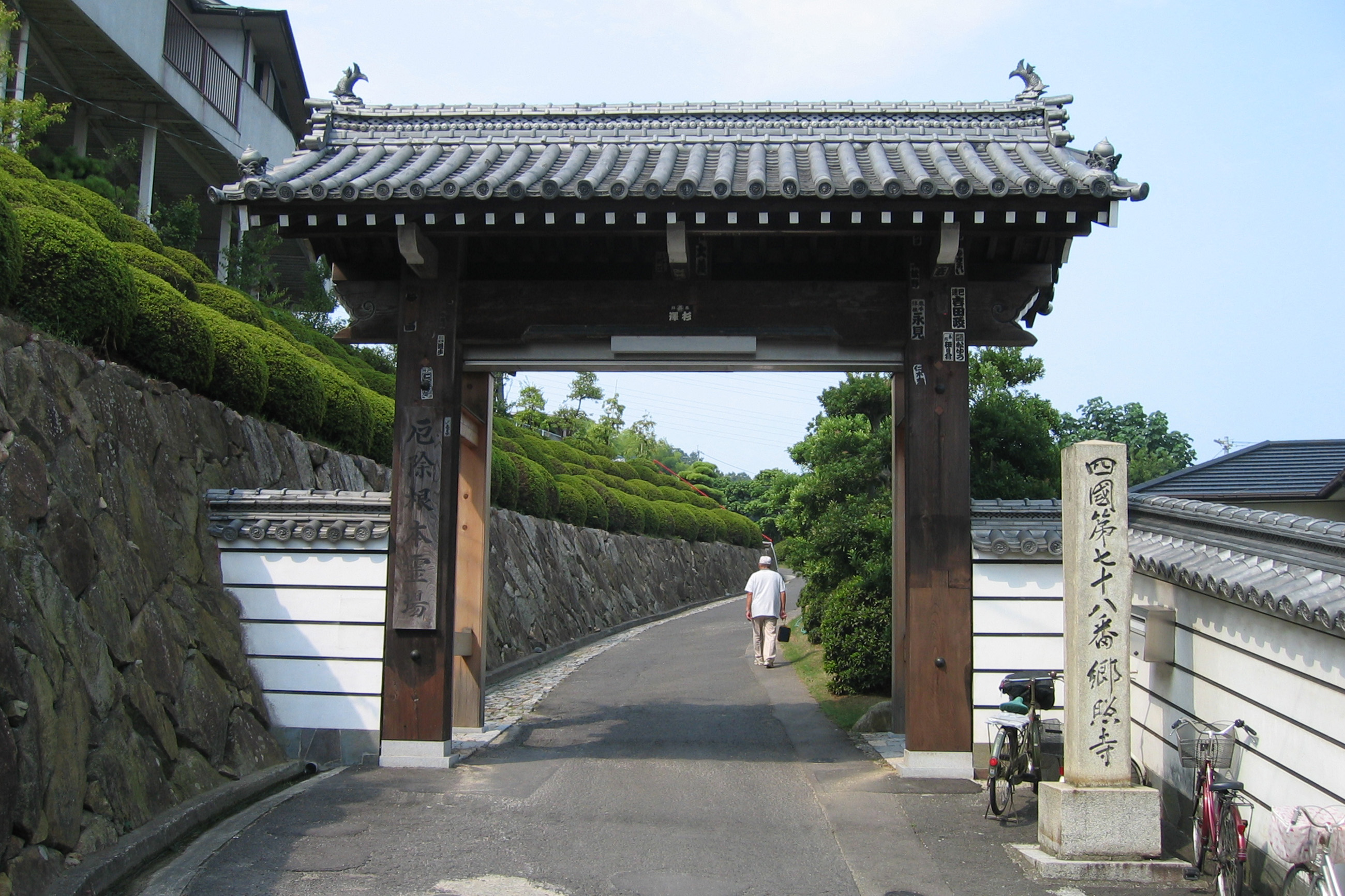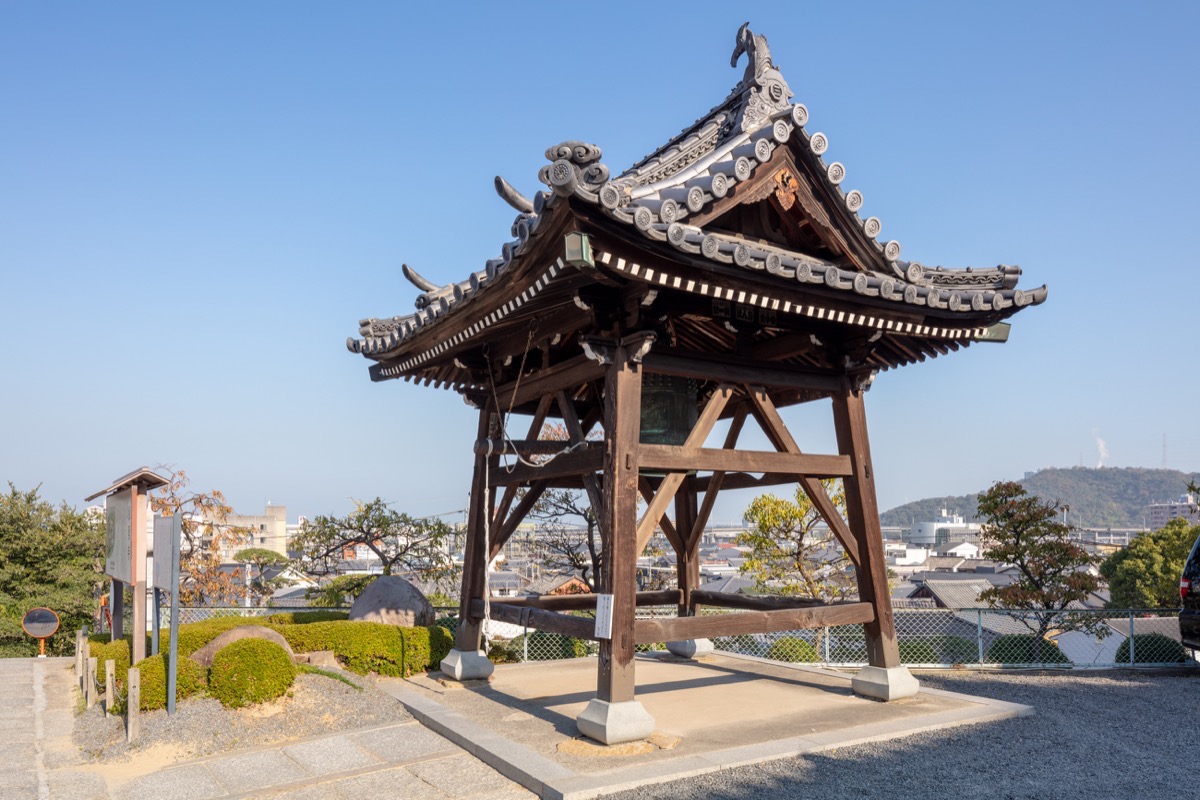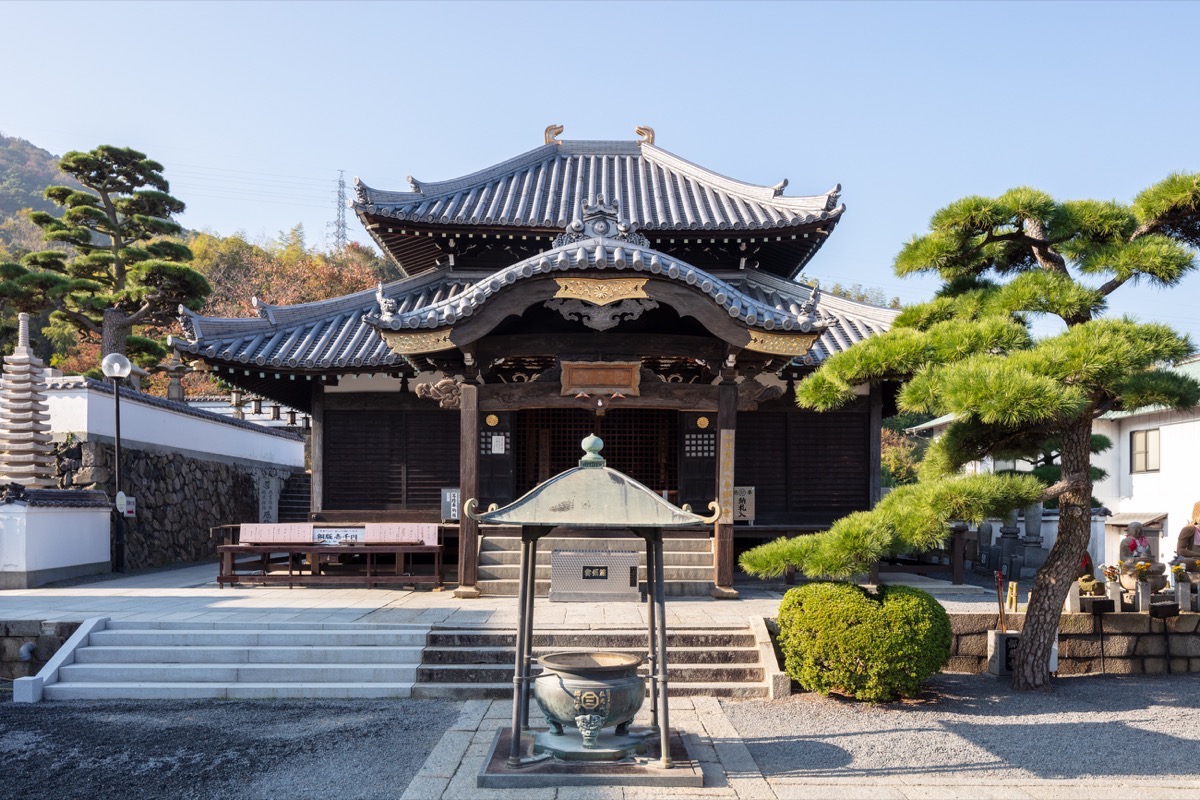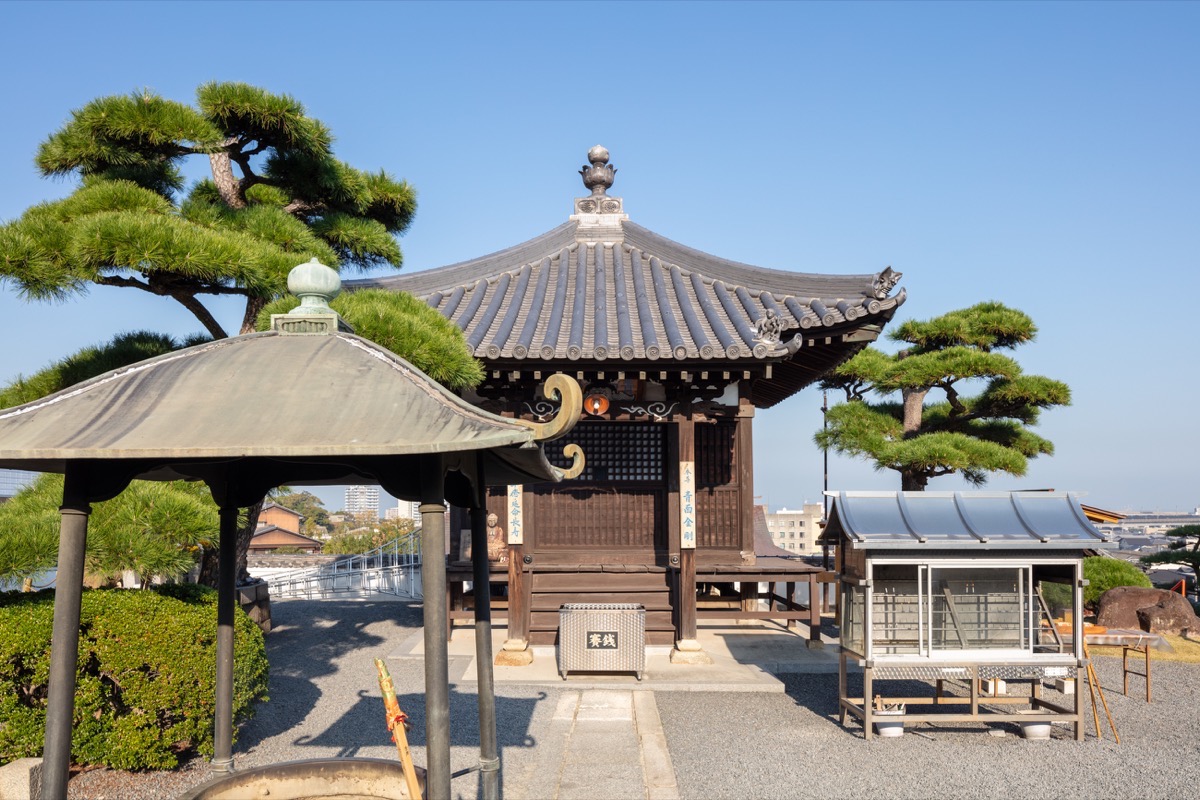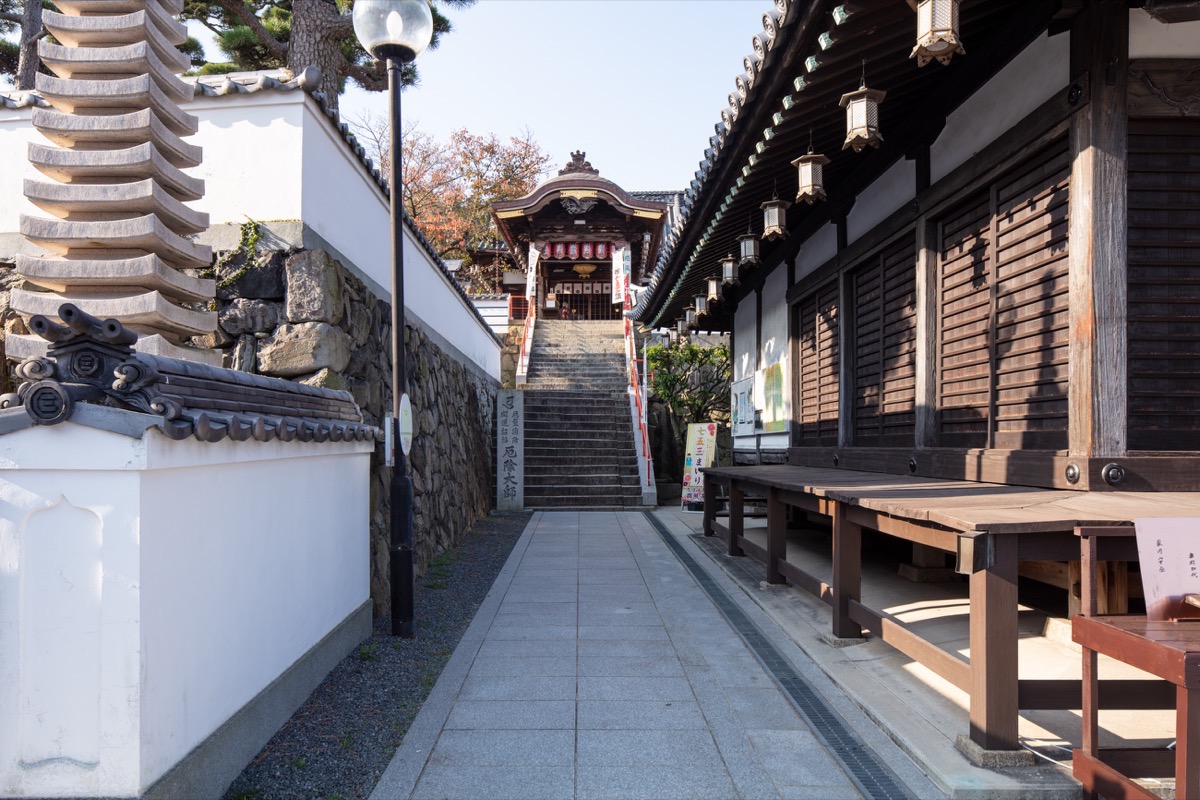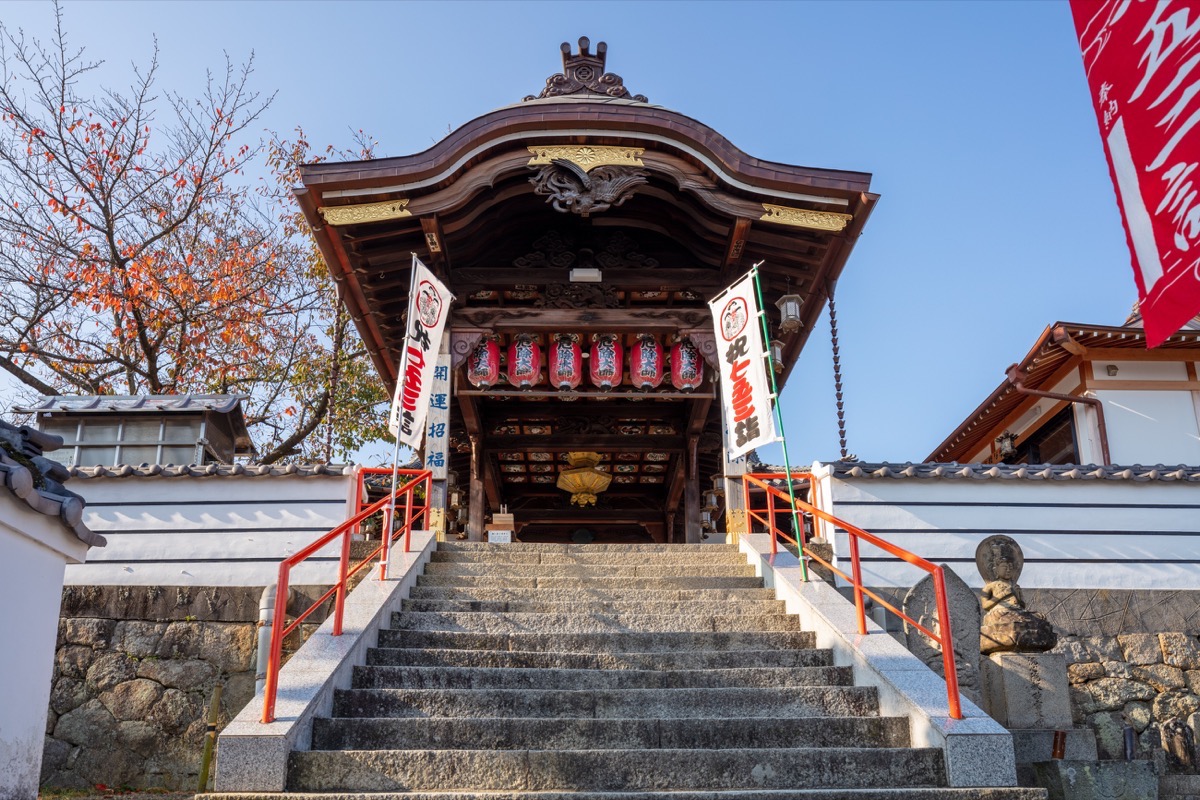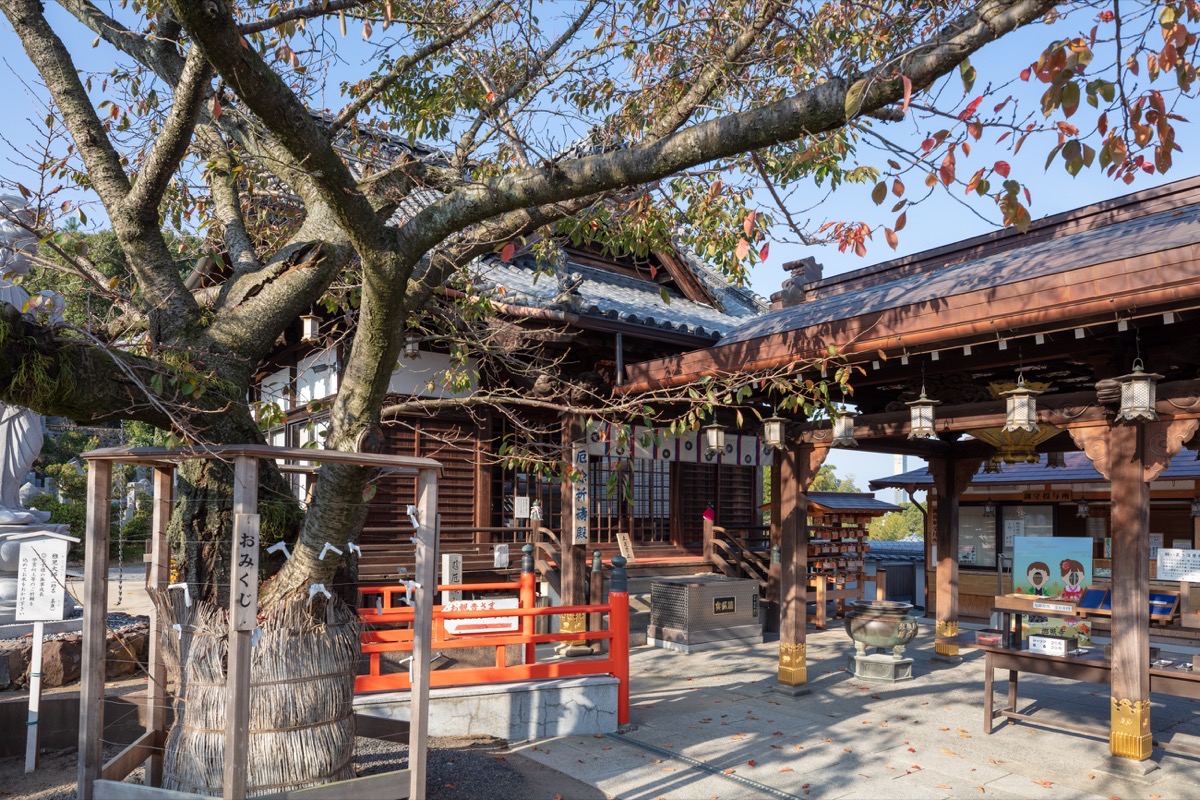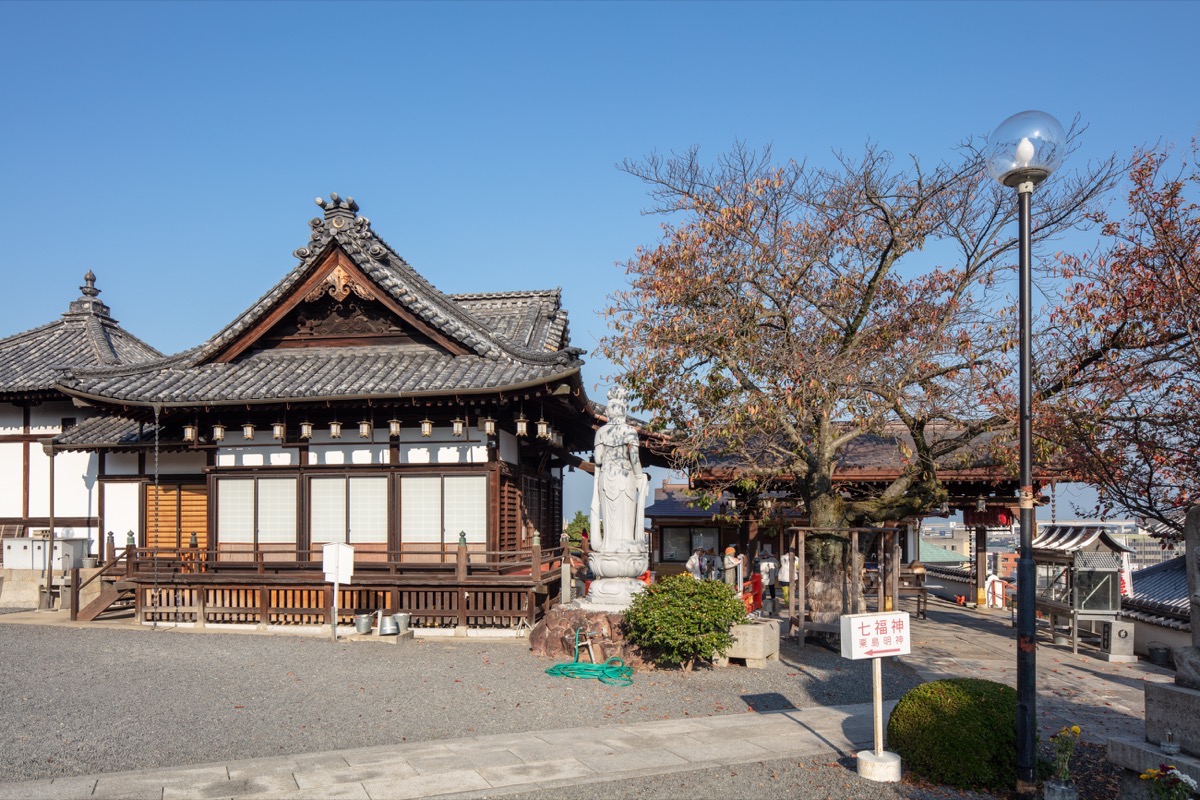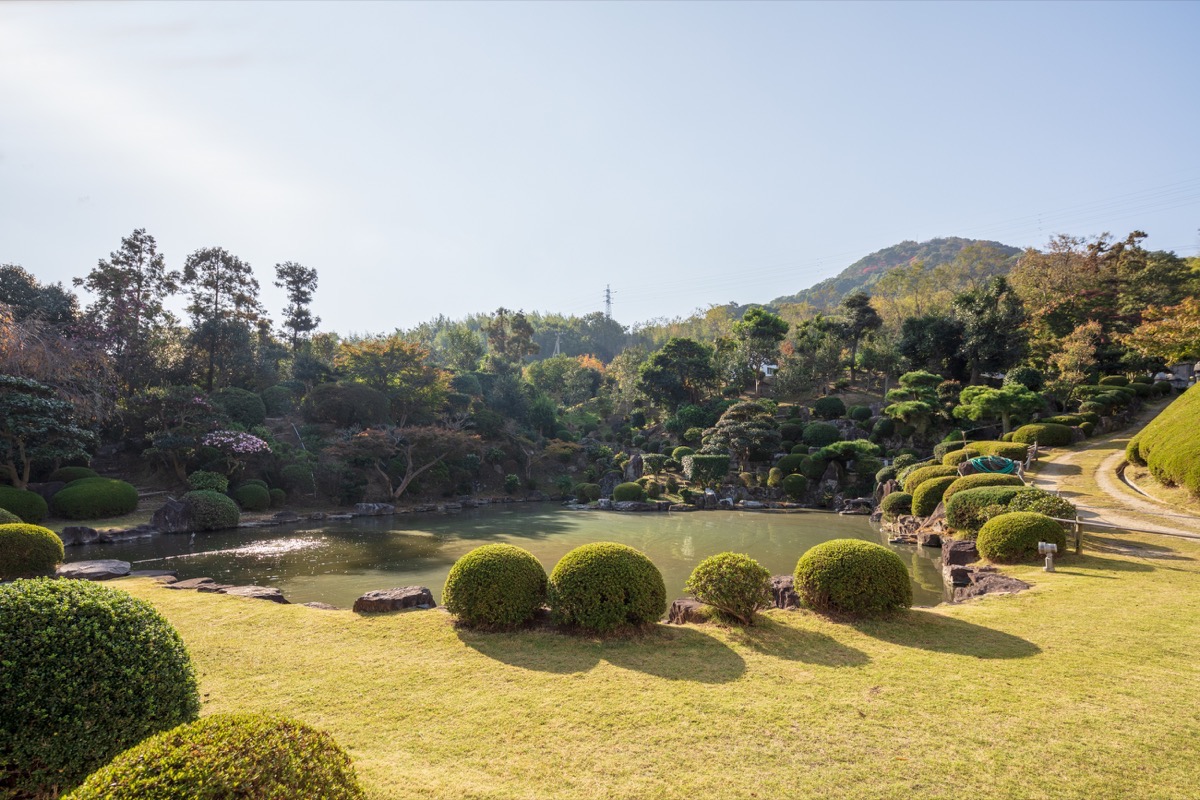Goshoji TempleThe 78th Temple Goshoji Temple
| District | Shikoku Henro pilgrimage | Period | ー |
|---|---|---|---|
| Set Content/Set Date | |||
| Owner | Goshoji Temple | Location | 1435 Ayautagun, Utazucho, Kagawa |
Midway up a small hill facing the Seto Inland Sea is Goshoji Temple, the 78th sacred spot along the Shikoku Henro pilgrimage. In the past, there was a port called Utazu beneath the temple, and this area flourished as a port town.
According to writings documenting its origins and history, Goshoji Temple was built in 725 by Gyoki, who carved a 55 centimeter statue of Amida Buddha and enshrined it there.
It is said that Kobo Daishi (Kukai) paid a visit to Goshoji Temple in 807, where he made a vow to ward off evil, and built a statue of himself. Even today Goshoji is famous as the temple “where Kobo Daishi wards off evil”, and is visited by many worshipers.
Nearly 800 years ago during the Kamakura period, Ippen Shonin, the founder of the Jishu sect, visited Goshoji Temple and propagated the Nenbutsu Odori, a type of Buddhist incantation with dance. As a result, Goshoji Temple is the only temple belonging to the Jishu sect on the Shikoku Henro pilgrimage. As the majority of sacred spots on the pilgrimage are associated with the Shingon sect of Buddhism, the fact that Goshoji Temple is a place of worship for both the Shingon sect and the Jishu sect makes it very unique.
Within the precincts there are the goddeses Awashima Myojin and Joban Myojin, a Blue-Faced Vajra, who wards off illness, and the Koshindo Hall, which enshrines the Three Monkeys. In this way, the teachings of the two major sects of Shingon and Jodo (Pure Land Buddhism) continue for more than a thousand years to the present, and this a sacred place where the Shinto-Buddhist syncretism that shaped Japanese Buddhist culture lives to this day.

